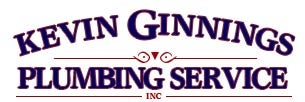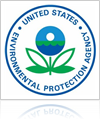By Shawn Martin
While the “Reduction of Lead in Drinking Water Act” was signed in early 2011, the story on it continues to unfold. The law is set and has not changed, but the U.S. Environmental Protection Agency (EPA) continues to release guidance detailing their interpretations of the law. Most recently, the EPA has released two documents designed to clarify questions on its applicability and implementation and to assist contractors, designers, and inspectors.
A document, “How to Identify Lead-Free Certification Marks for Drinking Water System and Plumbing Materials,” was released by the EPA in September 2013. It provides a user-friendly flow chart describing the decision-making process that should be used to determine whether a product must comply with the law. It also addresses certification marks that may be used to show compliance with the law.
Many examples of marks used by third-party certification agencies, such as ICC-ES, NSF, and CSA, are provided in the document, along with explanations on their use. But, the document also clarifies the fact that third-party certification of a product is not required, nor is there a single, uniform mark showing compliance. The document is available on the EPA website as a PDF download.
A second, more technical document, “Summary Of The Reduction Of Lead In Drinking Water Act And Frequently Asked Questions,” was released by the EPA in October 2013. This document followed a draft frequently asked questions (FAQ) document released in May 2013. The EPA sought comments on that draft through June 2013, and many individuals and organizations responded. The final version contains a number of revisions as a result.
Probably most notably, the FAQ document stated that water heaters and dishwashers (FAQ #6) and fire hydrants (FAQ #5) must comply with the new lead free requirements. It also provided updated information on the repair of various types of devices (FAQ# 23-30), including those installed before and after January 4.
Taken together, these documents provide the best available information from the EPA on its interpretation of the law. The FAQ document is a must-read for plumbing inspectors, contractors, distributors, manufacturers, designers and engineers. It should also be noted, though, that the EPA is still requesting feedback on the documents and other revisions are possible. So, it is important for all in the industry to continue to monitor developments.
Many channels are available to keep tabs on this law as it is implemented. For those who are ICC members, they can subscribe to the PMG Membership Council free of charge to receive updates as they become available. ICC also provides links to these key resources on its PMG homepage under the Resources tab, and makes every effort to keep them up to date. ICC is also a member of the Get the Lead Out of Plumbing Consortium, which provides a number of resources on the topic for different audiences. Distributors, such as Lowes and Ferguson, are working actively to push information to local stores, as national member organizations such as ICC, PHCC and ASPE are reaching out to chapters.
On the local level, states are still grappling with the law and working to determine how best to implement and enforce it. While the law requires that states enforce the installation prohibitions (and provides for a penalty if they do not), it does not specify the specific method they must use. Building and plumbing codes are suggested but not required. Without such a requirement in state or local code, however, many states are struggling to determine the appropriate enforcement authority. Efforts are underway in many jurisdictions to update local codes to require compliance with the new no-lead provisions. Model codes, such as the 2015 International Plumbing Code have been updated to comply with the new law and provide important resources for communities seeking to revise their codes.
So, in addition to monitoring the latest from the EPA, it is also important for those in the industry to monitor local plans for enforcement and rollout. States such as California, Maryland, Vermont and Louisiana have already passed state laws consistent with the new federal law, providing a framework for local implementation. Links to key documents from these states can also be found on the ICC PMG web page, under the Resources tab. It remains to be seen if other states will pass laws or move to revise codes seek to comply with the law.
It is critical that those in the plumbing industry continue to closely monitor federal, state and local developments related to the reduction of lead in plumbing products. Organizations such as ICC and the other members of the Get the Lead Out of Plumbing Coalition will continue to work to serve the industry with the best possible information, in a timely way as it is received.
Shawn Martin is the director of Plumbing, Mechanical, and Fuel Gas (PMG) Activities with ICC.
– See more at: http://www.plumbingengineer.com/jan_14/leadfree_feature.php#sthash.TkUEwCFr.dpuf

